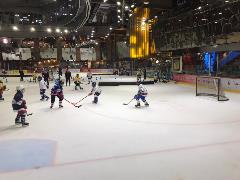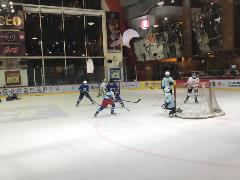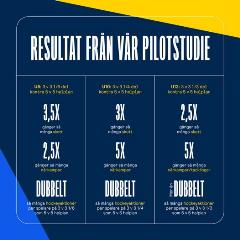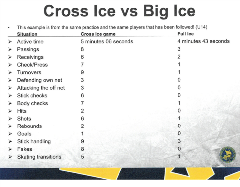

In Sweden, SIHA conducted a series of pilot survey about Small Area Game (3 v 3) applied on U8, U10, U12 & U14. This system develops a positive environment, increases puck handling, and teaches puck protection by forcing players to play in smaller and confined areas.
Mr. Anders Wahlström, Children and Youth Manager of SIHA added that “We must have an open mind about what is the best at the different stages of a hockey career“.
The pilot study also illustrated that around 2-5 times of hockey actions (e.g. shooting on net, passing, physical contact) achieved in small area game against the original full ice play. Individual players are encouraged to have more puck and play time, teamwork with lots of fun and excitement with teammates.


Moreover, with reference to IIHF’s publication about key advantages of cross-ice practicing and playing
IIHF Publication
- Children have more energy with which they can improve their skills when they are skating 30 meters across the ice surface instead of 60-meter length of the ice surface.
- Group sizes become smaller which means learning and teaching become more effective.
- Drills designed according to the varying skill levels of players within the group are easier to organize.
- Decision-making skills are enhanced. More decisions must be made more frequently at a higher tempo.
- Children remain active between their shifts with various activities in the neutral zone.
- The goalkeeper’s reading of the game and reaction to changing game situations becomes more effective.
- Hockey sense, or understanding of the principles of the game, is being developed at a young age.